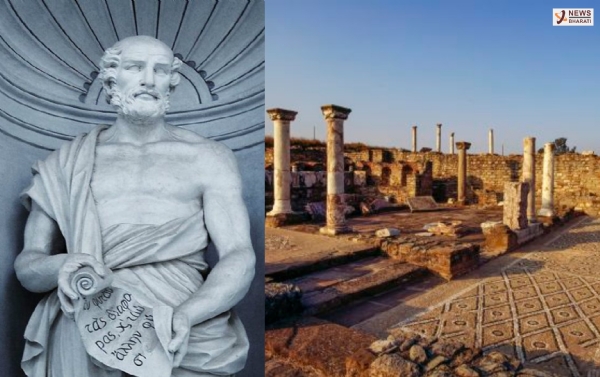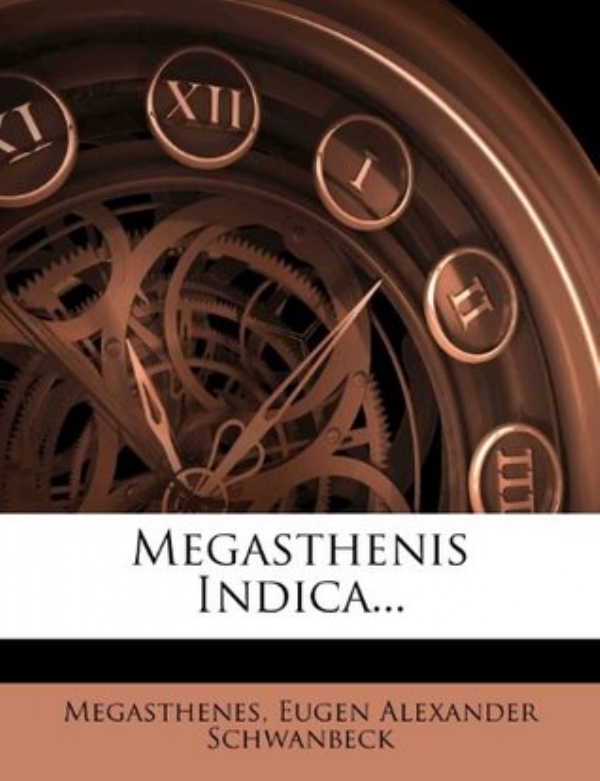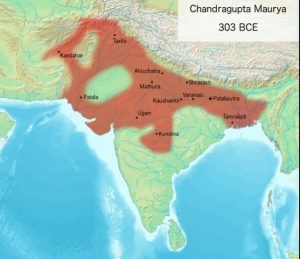Ancient India in the eyes of Megasthenes
Aside from Megasthenes" discoveries, scientific knowledge in Vedas, complex temple structures, metallurgical discoveries, town planning, civil engineering concepts, thermodynamics, and astronomy demonstrate the scientific and technological temperament at the time.
Total Views |
Historic records recorded by Megasthenes are significant to understand the history of Bharat. Many historians, primarily communists, wrote Indian history with the malicious intent of proving that communism is the ultimate ideology for the simple reason of selfishness that satisfied their personal desires at the cost of millions of lives and thrown the majority of followers in the worst conditions. Their hatred for Bharatiya culture and "Bharatiyatva" drove them to distort history, causing Indians to develop a hatred for their own culture and feel bad about their own culture, knowledge, and ancient history.

With a long history of invasion and colonialism, Indians are accustomed to viewing themselves through the eyes of the "other," especially in an English-centered universe. 400 years of Eurocentrism has distorted our perception of ourselves. However, it is worth noting that India's contacts with the outside world date back much further; to thousands of years ago, during the times of the civilisation on the banks of the Sindhu and the Saraswati, and they have been sources of its function as a cradle of universal ideas. The fake Aryan Invasion theory, twisted Epic Ramayana and Mahabharata stories, changing the facts about great warriors and freedom fighters like Chhatrapati Shivaji Maharaj, and portraying invaders and looters as great personalities have all been used to brainwash the people in order to sow discord, divide people, and break the nation. Greece, Rome, and Iran all lost their culture and identity, but India, despite more than 200 attacks and invasions, is still strong in culture, identity, and unity as a nation. Fake historians must accept that the principles of Sanatan Dharma are useful not only for India, but for the entire world.
However, ancient work on the ground, scientific discoveries such as DNA analysis, archaeological facts, and in-depth study and analysis by many national and international scholars, scientists demonstrated that India was great in all aspects, including socially, economically, scientifically, technologically, and spiritually. Megasthenes, a Greek philosopher, wrote one of the most ancient works based on personal experience and knowledge. He was a Greek diplomat, historian, and ethnographer whose extensive writings on Indian cultures provided insight into the lives of ancient Indians during Chandragupta Maurya's rule. Although his book, the Indika, was lost in the passage of time, it has been partially reconstructed using literary sources from later authors.
Indika, based on Hekataios' Aegyptiaka, was written in either the Attic or Ionian dialects and was divided into four sections. Megasthenes documented India's soil, climate, animals, plants, government, religion, people's manners, arts, and so on. In a nutshell, it's a detailed description from the king to the most remote tribe.
For one thing, it is the earliest surviving and most comprehensive description of Ancient India by a foreign visitor—the first in a line of visitors such as Fa Hien, Hiuen Tsang, and Al-Biruni who have provided valuable insights into the country's position at the time. Indika's influence on other Roman and Greek writers, as well as their scientific knowledge, has been enormous, aside from its role as an invaluable resource for Indian antiquity.
Ancient India as described by Megasthenes, Arrian and Dr. Schwanbeck

Indian soil is rich in gold, silver, copper, and iron. Tin and other metals are used to create a variety of tools, weapons, ornaments, and other items. India has very fertile plains, and irrigation is widely practised. Rice, millet, a crop called bosporum, cereals, pulses, and other food plants are the main crops. Aside from Megasthenes' discoveries, scientific knowledge in Vedas, complex temple structures, metallurgical discoveries, town planning, civil engineering concepts, thermodynamics, and astronomy demonstrate the scientific and technological temperament at the time.
Because of its size, India is home to many different races, all of which are indigenous. India has no foreign colonies, and Indians have no colonies outside of India. Slavery is prohibited by law, as prescribed by ancient Indian philosophers. Everyone is treated equally under the law. The breaking India forces created a bogus Aryan invasion theory to portray Bharatiyas as invaders who attacked Dravidians; this theory was not only rejected by Megasthenes, but scientific evidence from DNA analysis and archaeological findings proved it incorrect.
According to the Indika, society was divided into seven classes: sophists or philosophers, overseers, farmers, herders, artisans, soldiers, and councillors. Historians later attempted to connect this to "caste" in India, but this has serious flaws. Although endogamy was a feature of these classes, admission was not based on birth, and no mention of the four varnas is made. This could be interpreted as providing some support for the understanding of caste in Ancient India as a more fluid concept than conventional commentators concept. This clearly demonstrates that caste-based discrimination was not a feature of Indian civilization. It was designed to divide society; however, people became trapped, and caste-based narratives continue to harm society and the nation.
"The residents, in like manner, having abundant means of living, exceed in consequence the ordinary social standing and are distinguished by their proud bearing. They are also found to be skilled in the arts, as one would expect of men who breathe pure air and drink only the finest water. And, while the soil bears on its surface all kinds of cultivable fruits, it also comprises numerous veins of various metals underground." They dislike a large, disorderly crowd and, as a result, they maintain good order. Theft is extremely uncommon.

According to Megasthenês, those who were in the camp of Sandrakottos, which housed 400,000 men, discovered that the thefts reported on any given day did not exceed the value of two hundred drachmes, and this among a people with no written laws. They live happily enough, despite being simple and frugal in their manners. The fact that they rarely go to court attests to the simplicity of their laws and contracts. Their homes and property are generally unguarded. This demonstrates the high moral values practised at the time; however, as we have started following European culture, the majority of us have forgotten the moral values as greed and selfishness have taken over.
Pataliputra's municipal administration is detailed, with six committees of five people each in charge of foreign citizens, births and deaths, industry, and so on. This gives the impression of a bustling ancient world metropolis.
According to Indika, the King was the head of the state and had military, executive, legislative, and military functions. He was a hard worker who did not sleep or rest during the day and was available for administrative work at all hours. The empire was divided into viceroyal provinces, district heads, and a separate military administration. The majority of the population were soldiers and agriculturists. The weapons and equipment used by soldiers are also described in great detail.
The idea is not simply to glorify the past while ignoring the present, but to comprehend how returning to Sanatan Dharma roots with modern concepts will restore glory not only to our nation, but to the entire world.
--


